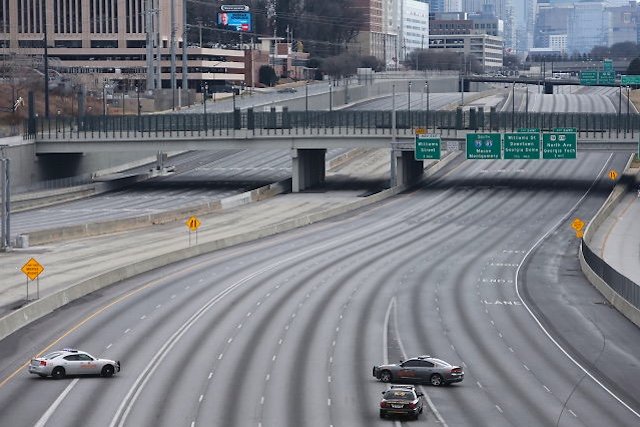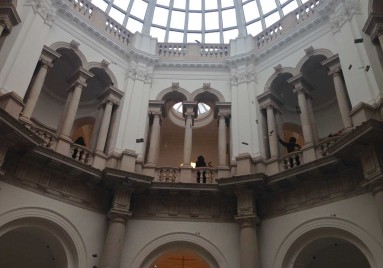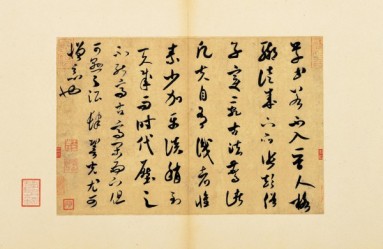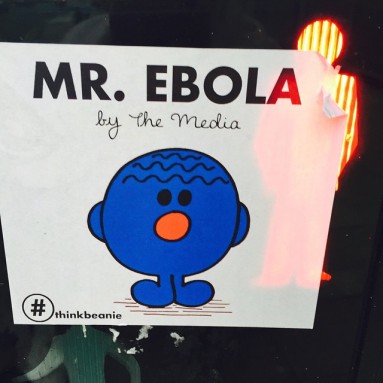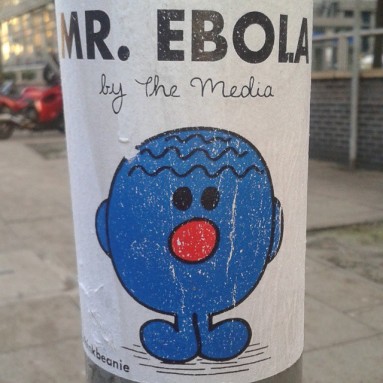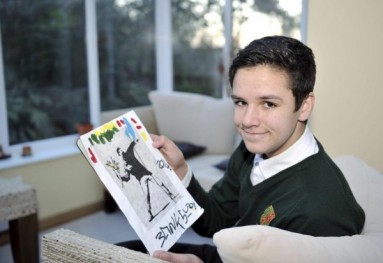The art device, a pinhole camera fashioned from a soda can and duct taped to the 14th Street bridge over interstates 75 and 85, was spotted by a passenger in a passing car just before 2pm on Monday. The man, who wished to remain anonymous lest drivers who were ensnared in the ensuing traffic jam seek revenge, immediately called 911. Atlanta Police deployed a bomb squad to the scene, and the tin can camera was exploded.
“I felt bad for the student, because this was his art project,” the man told local NBC affiliate 11Alive. “I hope he at least got an A.”
The person who most likely won’t get a passing grade after this debacle is the unnamed GSU art professor in charge of the students who installed 18 pinhole cameras around the city as part of a photography assignment. Another of the class’s DIY cameras, this one affixed to a pedestrian bridge, caused a similar police operation in the south Atlanta suburb of Hapeville.
(via)
• • •
Eight artist-activists enter the members-only café overlooking the museum’s pristine rotunda. Gaining entry to the café is no covert op; the activists are Tate members. They position themselves in the café’s outward-facing niches, encircling the rotunda. Clad in black, the unofficial uniform of the performance artist, they pull on sheer black veils. Each dissident reaches into a brown paper bag and, perhaps taking a page from Guggenheim protesters last year, proceeds to theatrically toss fake money into the gallery below — specifically, the BP Displays portion of the BP Walk Through British Art.
The fake £20 bills, which feature Tate Director Nicholas Serota on one side and Chair of Tate Trustees and former BP CEO John Browne on the other, float down slowly, coating the floor, sculptures, and staircase like a light snow. A little girl with pigtails runs through the flurry, giggling; a beleaguered member of the museum’s security staff makes repeated, panicked calls for backup on his walkie-talkie. The artist-activists throw £240,000 (~$360,900) total in fake bills, until the average yearly sum that Tate received from sponsor and oil behemoth BP between 1990–2006 has fully materialized in the gallery space.
(via)
A report published on the website of the agency on Tuesday says officials shouldn't “grab meat from the plates of artists."
Calligraphy is one of the popular hobbies of Chinese officials and is associated with scholarship and wisdom. Chinese leaders such as Mao Zedong have been praised for their penmanship and ink calligraphy, which is said to be revealing of one's depth of character. Officials will often create auspicious calligraphic works at the enterprises or work units that they visit as a memento that would then be proudly displayed by the companies.
But the CCDI warns that some officials who are not actually good at calligraphy are passing off their inferior works as valuable items. They explain that the works are then sold as a means of concealing bribes being paid to the officials by the buyers of the "artworks." The system, which essentially amounts to a form of money laundering, is known as "elegant bribery" in the country.
(via)
• • •
Nick Carr wrote on Twitter: "Just seen a mock-up street sticker of a Mr Men design, except with 'Mr Ebola' instead of 'Mr Happy' or 'Mr Grumpy' etc. Is it a Banksy?"
And Joni tweeted: "Do I stay or do I go? Putting them pedestrians at risk. Don't remember this one like... thinkbeanie."
The posters have been spotted in Manchester, Leeds and Nottingham over the past fortnight.
They follow the design of the famous Roger Hargreaves characters and appear to mock the media coverage of the Ebola outbreak in West Africa that has killed over 8000 people.
(via)
• • •
But, according to Banksy’s publicist (who would say that, but would normally refuse to comment if it were true) both stories are complete rubbish and the artist wasn't anywhere near where they were supposed to have taken place.
“It isn’t true. I don’t know where it has come from, it is really strange,” Jo Brooks said.
Both stories about Robin Banks occurred in Cumbria: the first reported that a schoolboy, Ben Azarya, 14, was given a print which, if original, would be worth around £20,000, by a stranger travelling on the Oxenholme to Penrith train.
The latest “sighting” comes from Cockermouth where Banksy is alleged to have popped into Wild Zucchinis restaurant on 19 January to admire the street art on the walls.
Restaurant owner Manon Plouffe, 48, told The Independent: “He was looking at the décor. We have a bit of graffiti art on the walls. He said ‘that’s funky, I like it’. He said ‘I’m a graffiti artist’.
(via)
